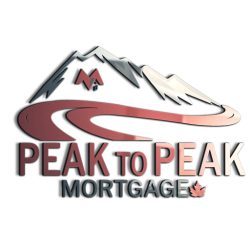This information post will explain what it means to have a mortgage pre-approval in today’s environment, and the documents that you will need.
When it comes to a mortgage pre-approval, it is important to note that the process has a few moving parts.
Typically, the mortgage qualification process involves 2 debt service ratios, the GDS (Gross Debt Service) and TDS (Total Debt Service). These are debt service ratios that lenders use to determine your eligibility for a mortgage. The GDS factors the mortgage payment for the home you are buying + the property taxes + the strata fee (if there is one) + average heating costs and is divided by your verified income. The GDS maximum is usually 39%.
The TDS factors all of the payments for the GDS + any other liabilities you have, for example, student loan payments; credit cards; lines of credit; vehicle loan or lease; child support or alimony, to name a few. The TDS maximum is usually 44%.
When we are calculating the GDS and TDS, we must use a “stress test” rate or Minimum Qualifying Rate (MQR) that is the greater of the Bank of Canada qualifying benchmark rate (currently 5.25%) or 2% above your contract interest rate. So, as of the writing of this post, if the rate you were obtaining was 4.59%, the rate we would have to use to calculate the payments for the debt service ratios would be 6.59%. The 6.59% being the “stress test” rate.
When we are running the numbers for a pre-approval, we can only estimate what your strata fees and property taxes will be. The GDS and TDS ratios must be re-examined once you have found a home that you are interested in to make sure the actual figures fit the qualifying ratios. If the home you want to purchase pushes your debt service ratios over the guidelines, you may have to put more down, or arrange for a co-signer.
Additionally, with the way the mortgage rates have increased over the last year, the stress test rate qualification has also increased. What you were pre-approved for a couple of months ago, may be different with today’s higher rates.
It is also important to note that lenders and/or mortgage insurers have to approve the property you are interested in. Some factors that are considered include, but are not limited to: square footage; age; strata building maintenance; zoning; marketability; and geographic location.
The above GDS and TDS ratios of 39 & 44% are firm guidelines if you are purchasing with less than 20% down and need a high ratio mortgage. If you have a minimum of 20% down, we may be able to work with a lender that looks at exceptions to those ratios, on a case-by-case basis.
Also, if you are purchasing a home with a suite, the use of rental income from the suite may help with keeping your debt service ratios within an acceptable range for qualifying.
The documents that you will need are important to have organized and available.
I am often asked why the banks & lenders need so much paperwork. The reason is that since the financial crisis of 2008, the lending environment has shifted to place heavy emphasis on applications being document verified. The document requirements of today reflect the anti-fraud and anti-money laundering practices that have been implemented since the crisis, for risk management.
What this means for you…
The banks & lenders will want to verify your employment & income. Here is a sample of the typical documents requested:
- If you are an employee of a company (that is not your own), you will need a signed letter on company letterhead confirming your original hire date, position, and income. If you are paid hourly, the hourly rate should be noted, along with your minimum guaranteed hours per pay period. The person signing the letter should provide their contact details in case the lender needs to do a verbal verification.
- If you are able to work remotely, this should also be reflected in the letter.
- Your most recent paystub.
- If your hours vary, or you earn overtime or bonuses, you will also have to provide your last 2 year’s T4 slips.
- It is also helpful to have your last 2 year’s CRA Notices of Assessments.
- If you are self-employed, you will have to provide your last 2 year’s personal T1 General tax returns, the Notices of Assessment (NOAs), and the Statement of Account if there were taxes payable on the most recent NOA.
- The bank or lender may also ask for your last 3 months’ business bank statements to confirm that the business is ongoing and receiving revenue.
- If you are self-employed with a corporation and have paid yourself via dividends or with T4 income, you will also have to provide the information slips for the last 2 years as well.
- If you have a corporation, you will need your last 2 year’s company financial statements, and the company incorporation documents to confirm company ownership.
- You may be required to provide GST returns.
- If you receive pension income, you will have to provide the T4A slips; your last 2 bank statements confirming auto-deposits (or cheque stubs), and/or pension correspondence from the source of the pension.
- If you earn your income from a few different sources, make sure you have your T4, T4A, and T5 slips from each source for the last 2 years.
- If you have 2 seasonal jobs, employment letters will be needed from each employer as well as last received paystubs.
- If you are providing T1 General tax returns, they must be full copies (not condensed).
- All information slips must show your name. The banks & lenders will not accept information slips that do not show your name.
To verify down payment, here is a sample of what will be required:
- A 90-day history of bank statements from each account that will be used for the down payment funds. If there are large deposits/transfers to the account(s), a 90-day history of bank statements will be needed for those accounts as well, or the source of those deposits verified.
- For deposits to the account(s) from wire transfers, copies of the wire-transfers should be available.
- If part of the down payment was from the sale of a car, the bill of sale for the vehicle should be available to help verify the deposit to the account.
- Bank statements can not be redacted, and must show your name(s) and dates.
- If you are using your RRSP, TFSA, or other investments, they will need a 90-day statement history. As noted above, large deposits will have to be verified.
- If you are receiving a family gift, each lender has their own unique family gift letter that must be used. The family member providing the gift may also have to provide confirmation of the availability of the gift funds with a bank statement, or the completed portion on the bank’s gift letter.
Here is a sample of the purchase documents that will be needed once you have an accepted offer:
- All pages of the accepted offer.
- MLS information sheet for the property details.
- PDS (Property Disclosure Statement).
- If the property is a in a strata:
- Last 2 year’s AGM minutes.
- Any Special AGM minutes for the last 2 years.
- Strata Form B.
- Strata financial statement & most recent budget.
- Depreciation Report (if available).
- Strata fire insurance.
In summary:
It is worthwhile to have an understanding of what a mortgage pre-approval really is – an indication from a bank or lender that they are interested in granting you a mortgage, as long as the property you want to purchase meets their guidelines, and if you qualify at the time you write the offer.
The pre-approval that is issued is usually valid for 120 days which can be useful if fixed rates have gone up in that time, or if the discounts off variable rate mortgages have reduced. The fixed rate and/or the discount off the prime are protected for your purchase within the 120 day window as long as your Completion Date falls within the rate guarantee timeframe.
If you are interested in a pre-approval, the best way to start the process is with the online application: Online Application – Peak to Peak Mortgage.
Please feel free to reach out any time you have any questions about the mortgage pre-approval process and the documents that you will need: annie@peaktopeakmc.com.


